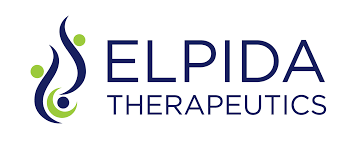 CMT Research Foundation announced they have funded Elpida Therapeutics to launch manufacturing of a gene therapy drug for Charcot-Marie-Tooth disease type 4J. The announcement came at the 2025 Global CMT Research Convention.
CMT Research Foundation announced they have funded Elpida Therapeutics to launch manufacturing of a gene therapy drug for Charcot-Marie-Tooth disease type 4J. The announcement came at the 2025 Global CMT Research Convention.
“Our ELP-02 gene therapy is trial-ready,” said Elpida CEO Terry Pirovolakis, the father of a child with a rare genetic disease who founded the company to develop “abandoned” therapies for rare diseases. “Thanks to efforts spearheaded by CureCMT4J, preclinical studies have demonstrated its great potential, and it has earned Investigational New Drug status. Now because of funding from the CMT Research Foundation and CureCMT4J, we’re on the cusp of bringing it to patients.”
CMT is a group of rare, inherited disorders marked by progressive degeneration of nerves that control muscle movement and sensation. No cures exist yet for any of its subtypes, which together affect one in 2,500 in the U.S. and an estimated three million worldwide. CMT4J is an ultra-rare subtype, caused by loss of function mutations in the FIG4 gene that result in progressive nerve loss, muscle weakness and loss of sensation. Most people with CMT4J require wheelchair use and multiple surgeries by their teens or early twenties. Respiratory involvement is also common, which can result in ventilatory dependance or early demise. Though rare, a successful gene therapy for CMT4J could help pave the way for the accelerated development of gene therapies for other subtypes of CMT, as well as other neurodegenerative or neuromuscular disorders utilizing a similar technology and approach.
CMTRF provided $800,000 and CureCMT4J provided $700,000 to Elpida, which will help to cover the costs associated with manufacturing clinical grade ELP-02 doses for the phase I/II trial. Elpida aims to begin treating affected patients in early to mid-2026.
“This trial is among some of the most promising CMT research with the greatest likelihood of leading to clinical trials or approved therapies in the near term,” said Laura M. MacNeill, CEO of CMTRF. “What we learn from this gene therapy approach for the CMT4J Elpida project will contribute to our larger understanding of how to cure other CMT subtypes and a range of devastating neurological conditions.”
The trial comes at an opportune time as the U.S. Food and Drug Administration announced in early September a new process to streamline rare disease drug approvals based in large part on a single well-controlled study. Drug makers tend to sidestep rare-disease research because of the small numbers of patients. But advocates stress the urgency of a lifesaving effort that could cure a devastating rare illness and inform therapy development for other genetic disorders as well, such as Parkinson’s, Alzheimer’s and ALS.
“With less than 100 patients identified worldwide, it has been difficult to attract industry to help us bring our gene therapy into a clinical trial. It is devastating for patients and parents like me to know we have a treatment sitting on a shelf but cannot get it to patients due to a lack of funding,” said CureCMT4J Executive Director, Jocelyn Duff, whose daughter has CMT4J. “That’s why these partnerships are so crucial. With CureCMT4J, CMTRF and Elpida working together, we can finally get this therapeutic out of the lab and into the patients who have been waiting for so long.”
Elpida will begin producing the therapy to conduct the trial at various research centers that will be finalized in the coming months. “This is a ‘hope and a prayer’ approach necessitated by the urgency of rare diseases’ devastating consequences and unmet needs,” Pirovolakis said.
The ELP-02 therapy utilizes an adeno-associated virus (AAV) vector to intrathecally deliver functional copies of the FIG4 gene into nerve cells lacking normal FIG4 function. A growing body of evidence backs the general safety and effectiveness of AAV vectors.
“We invested in this trial because of Elpida’s successful track record of finding ways to get a potential rare disease treatment through all the hurdles in the clinical research process,” MacNeill added.
